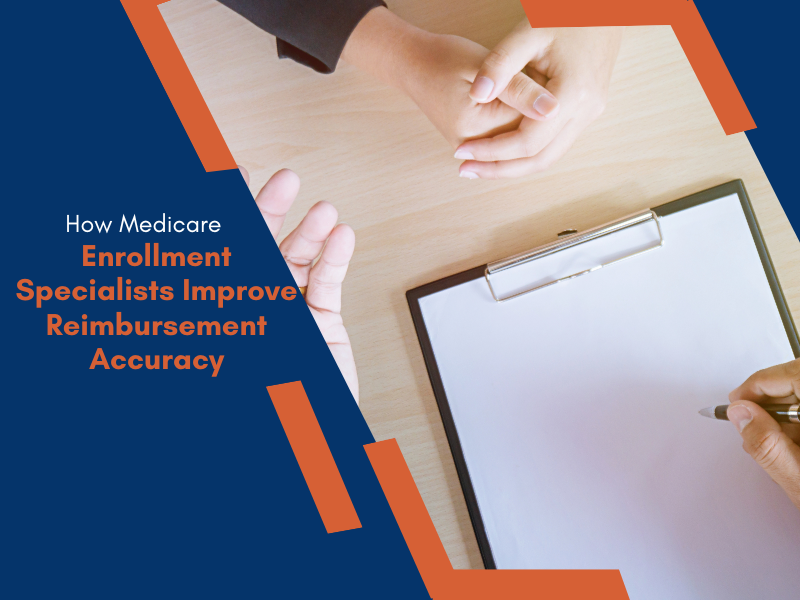
In the dynamic landscape of the US healthcare industry, credentialing plays a pivotal role in ensuring the competence and quality of healthcare professionals. However, several misconceptions surround this essential process, often leading to confusion and misinformation. In this blog, we will debunk common misconceptions surrounding credentialing, shedding light on its significance beyond doctors and nurses, the ongoing nature of the process, and its diverse applications in various healthcare settings. Join us as we unravel the truth behind credentialing in the US healthcare industry.
Misconception 1: “Credentialing is only necessary for doctors and nurses.”
Many people mistakenly believe that credentialing is exclusively required for doctors and nurses. However, the truth is that credentialing extends beyond these roles to encompass a wide range of healthcare professionals and specialties.
Physicians: While doctors are indeed essential in healthcare, the misconception that credentialing is only necessary for doctors is incorrect. Credentialing is crucial for ensuring the competence and adherence to industry standards of a wide range of healthcare professionals and specialties within the physician category. This includes specialists such as surgeons, cardiologists, dermatologists, and pediatricians, among others.
Allied Physicians: In addition to physicians, credentialing is equally important for allied healthcare professionals. These professionals play vital roles in patient care and require credentialing to demonstrate their competency and adherence to industry standards. Some examples of allied healthcare professionals who undergo credentialing processes include:
- Pharmacists: Pharmacists go through a rigorous credentialing process, including licensure, to ensure they have the information and abilities needed to distribute pharmaceuticals accurately and securely.
- Physical Therapists: Physical therapists need credentials to prove their proficiency in offering rehabilitation treatments, ensuring the highest standards of care for patients.
- Physician Assistants: Physician assistants undergo credentialing to verify their qualifications and competence in providing medical care under the supervision of physicians.
- Medical Laboratory Scientists: Credentialing is essential for medical laboratory scientists to demonstrate their expertise in performing laboratory tests and analyses accurately and efficiently.
Credentialing across these various healthcare professions ensures that only competent individuals provide care, reducing the risks of errors, misdiagnoses, and compromised patient outcomes. Dismissing the importance of credentialing for non-doctor and non-nurse healthcare professionals undermines the foundation of quality healthcare delivery and patient safety.
Misconception 2: “Credentialing is a one-time process.”
Credentialing in healthcare is far from a one-time event. It is an ongoing process that ensures healthcare professionals maintain their qualifications and competence throughout their careers. It goes beyond the initial verification of credentials and involves continuous monitoring and assessment. Considering credentialing as a one-time process overlooks the crucial element of ongoing assessment and development necessary for healthcare professionals to deliver safe and effective care throughout their careers.
Initially, healthcare professionals undergo a thorough credentialing process to confirm their qualifications, education, and licensure. However, this is followed by re-credentialing stages at regular intervals. These re-credentialing cycles involve reviewing updated credentials, assessing ongoing professional development, and evaluating performance and patient outcomes. Continuous professional development and competency assessments are integral to the ongoing credentialing process.
Misconception 3: “Credentialing and licensing are the same.”
While credentialing and licensing in the healthcare industry are related, they serve different purposes. Licensing is the process through which regulatory authorities grant legal permission to healthcare professionals to practice within a specific jurisdiction, ensuring they meet minimum competency standards.
On the other hand, credentialing involves the evaluation and verification of a healthcare professional’s qualifications, experience, and adherence to specific industry standards by healthcare institutions or organizations.
Licensing grants the legal authority to practice, while credentialing validates the qualifications and competence of healthcare professionals beyond the basic licensure requirements. Employers and healthcare institutions rely on credentialing to ensure they hire highly qualified and competent professionals who meet their specific standards.
By recognizing the distinction between licensing and credentialing, healthcare professionals can navigate the regulatory landscape more effectively, while employers can make informed decisions when hiring privileged practitioners.
Misconception 4: “Credentialing is a burdensome administrative task with no tangible benefits.”
Credentialing offers numerous benefits to healthcare professionals. Credentialing enhances professional credibility, and career advancement opportunities, and increases marketability in the healthcare industry. It provides a sense of professional pride and instills confidence in both practitioners and their patients.
Beyond administrative requirements, credentialing significantly contributes to improved patient care and outcomes. By ensuring that healthcare professionals meet rigorous standards, credentialing promotes patient safety, reduces medical errors, and enhances the overall quality of care. It establishes a system of accountability and ensures that practitioners remain up to date with the latest advancements in their field, ultimately benefiting patients by receiving care from competent and qualified professionals.
The misconception that credentialing is a burdensome administrative task without tangible benefits overlooks the positive impact it has on healthcare professionals’ careers and the significant role it plays in improving patient care and outcomes.
Misconception 5: “Credentialing is a one-size-fits-all process.”
Recognizing that credentialing is not a one-size-fits-all process acknowledges the importance of individualized assessments based on healthcare specialties and roles. By tailoring credentialing, healthcare professionals receive recognition for their unique qualifications, and healthcare institutions ensure the highest standards of care are maintained within each specialized field.
Different healthcare specialties and roles have unique education, training, and certification requirements. For example, the credentialing process for a surgeon would differ significantly from that of a registered nurse or a radiology technician. Each profession has its own set of standards and criteria that must be met for successful credentialing.
By customizing credentialing, healthcare institutions, and organizations can ensure that practitioners are appropriately vetted and are competent to deliver specialized care within their respective fields.
In debunking the common misconceptions surrounding credentialing in the US healthcare industry, we have uncovered the truth behind this essential process. From clarifying that credentialing extends beyond doctors and nurses to emphasizing its ongoing nature, diverse applications, and distinctiveness from licensing, it is evident that credentialing plays a critical role in maintaining high-quality care and patient safety.
At Apaana Healthcare, we strive to ensure our clients are well-informed and on top of the latest updates in credentialing. Contact us today to discover how our comprehensive solutions can support your organization in navigating the complex world of healthcare credentialing and staying ahead in an ever-evolving industry. Together, let’s prioritize accurate understanding and implementation of credentialing processes for the betterment of healthcare delivery.




